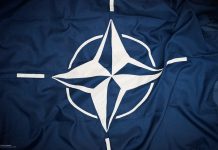
NATO has deployed a multinational naval task force comprising vessels from the Netherlands, Norway, Portugal, and Germany to strengthen its maritime presence in the Arctic and High North.
The naval units, part of Standing NATO Maritime Group 1 (SNMG1), began operations in these strategically significant waters earlier this week.
Among the participating ships are the Dutch flagship HNLMS De Ruyter, Norway’s HNoMS Thor Heyerdahl, Portugal’s NRP Bartolomeu Dias, and Germany’s Rhön. Their missions are being supported by additional maritime patrol aircraft to enhance surveillance and operational effectiveness.
This deployment includes anti-submarine warfare exercises aimed at safeguarding vital sea routes and maintaining freedom of navigation. Routine patrols are also part of the task group’s mission.
“These operations will involve coordinated maneuvers between surface vessels and aerial assets to improve NATO’s maritime awareness, bolster intelligence sharing, and refine navigational skills,” said Commander Arlo Abrahamson, spokesperson for NATO’s Allied Maritime Command, in a statement to Defense News.
Abrahamson noted that the mission offers a valuable opportunity for NATO forces to deepen their understanding of the polar environment and improve operational sustainability in Arctic conditions.
The move follows a large-scale naval drill conducted by Russia, known as “July Storm,” which took place from July 23 to 27 across the Pacific, Arctic, Baltic, and Caspian seas. According to Russia’s defense ministry, the exercise involved around 150 warships and 15,000 personnel.
In recent years, analysts have pointed to growing cooperation between Russia and China in the Arctic, including joint military exercises and combined naval and air patrols near the East China Sea and Sea of Japan.
A recent analysis from the Center for European Policy Analysis cautioned that both nations show interest in targeting critical subsea infrastructure—an issue that could pose risks to NATO members.
“Seabed warfare and the disruption of critical undersea infrastructure represent another form of hybrid threat that Russia and China may pursue in the Arctic. Both countries appear intent on exploiting these vulnerabilities to undermine Western interests,” the report stated.
Currently, seven NATO nations—Canada, Denmark, the United States, Norway, Sweden, Finland, and Iceland—hold territory within the Arctic Circle.





